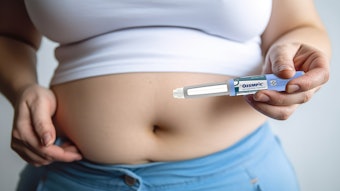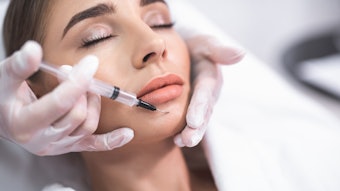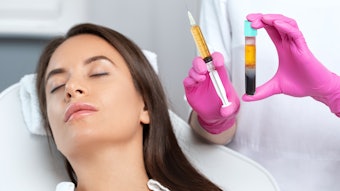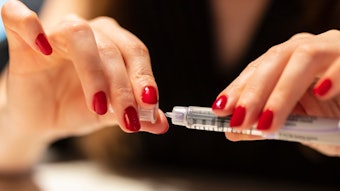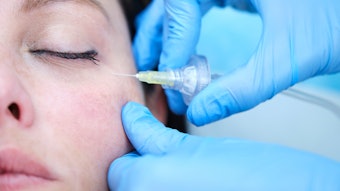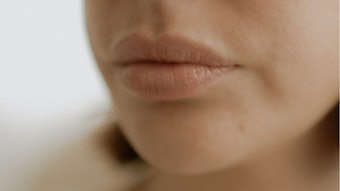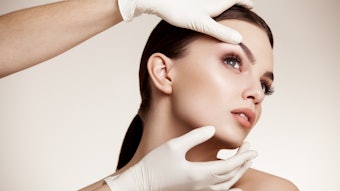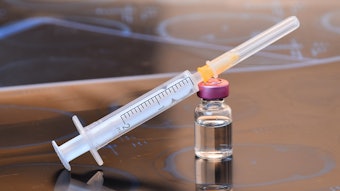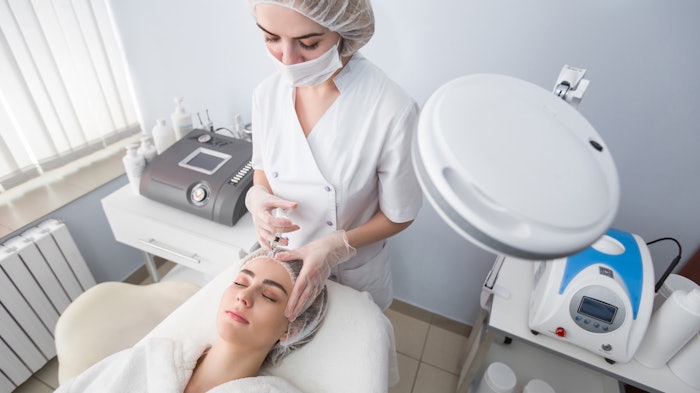
Researchers André Borba, Suzana Matayoshi and Matheus Rodrigues performed a literature review to determine the main complications of treatment with botulinum toxin injections (BoNT) on the upper face and presented a practical guide based on current evidence on how to avoid them. The paper was published in the Aesthetic Plastic Surgery Journal (August 2021).
They searched MEDLINE and PubMed for the following terms: "botulinum toxin; onabotulinumtoxinA; incobotulinumtoxinA; aesthetic" AND "complication; side effects; safety." Inclusion criteria were studies published between January 2000 and December 2020 in English, which described complications associated with the cosmetic use of botulinum toxin, as well as studies that presented ways to avoid them.
Related: [Botulinum Toxin] Tips to Reduce Eyelid Ptosis
The main complications secondary to BoNT injections on the upper face are:
- ptosis of eyelid and eyebrow
- eyebrow asymmetry
- diplopia
- Lakeophthalmos
- Palpebral ectropion
- prominence of the palpebral bags
To avoid these complications, it's necessary to have knowledge of the anatomy of this region and adeqate and individualized planning based on the existing patterns of the frontalis muscle, glabella and crow's feet. The review provides specificities of each of these regions and practical suggestions to obtain satisfactory results while avoiding complications.
In general, the authors determined that the standard and ideal botulinum toxin application plan would be using the total of 64 units of Botox, combining: standard "U" glabella treatment (ranging from 12 U to 40 U), frontalis muscle treatment—total pattern (ranging from 8 U to 25 U), and the periorbital lines (ranging from 6 U to 15 U per side). Considerations should be made to muscle strength, anatomy (rhytide pattern), baseline asymmetries as well as patient desires when deciding on dose and injection pattern.
Related: Filler Properties Shift Under Strain and Movements
More specific recommendations include:
Frontalis Muscle
The authors note that the purpose of treatment with BoNT in this region is to soften expression lines without causing brow ptosis or eliminating the entire upper face expression. To avoid complications, the most recent guidelines and consensus suggest that the application should be performed 2.5–3 cm above the orbital rim, respecting the limit of 1–2 cm from the upper eyebrow line. As for the upper limit, 1 cm from the region of the implantation line of the beginning of the hairline is respected
Because it is a flat and wide muscle, which covers almost the entire length of the upper face, for good coverage of the area of hyperkinesis, it is important to consider that 2 units of Botox Cosmetic, when injected intramuscularly in dilution 100 U/2 mL of saline 0.9%, produce a halo of action of about 1.5 cm. Thus, when planning the treatment, the points of application should be distanced, respecting this halo, to produce effective and lasting muscle relaxation.
Glabellar Lines
The treatment of glabellar region focuses on the attenuation of mainly the procerus and corrugator supercilii muscles. Contraction of the procerus muscle lowers the medial aspect of the eyebrow and is the main contributor to the horizontal lines, whereas contraction of the corrugator muscle draws down the medial aspect of the eyebrow and is primarily responsible for vertical lines. The brow depressor muscle is, for many, part of the corrugator muscle, extending from the nasal portion of the frontal bone to the skin of the medial portion of the brow, its belly being positioned about 1 cm above the medial canthal ligament. Therefore, it is important that the injection points are projected above 1 cm from the medial canthal ligament.
The authors caution that, although many practitioners consider glabellar wrinkles to be identical in most individuals and therefore use classical models of application on the glabella, with three, five, or seven points distributed on the corrugator, procerus and/or orbicular eyelid muscles, the descriptions of universal models do not consider the individual characteristics that are present in the different muscle contraction patterns.
To obtain more satisfactory results, it is important to identify the patterns of the glabellar lines and then plan the injection points using one of five patterns of the glabellar lines: pattern V, U, omega, converging arrows and inverted omega.
Crow’s Feet Lines
The orbicularis oculi muscle of the eye is a flat, broad, sphincter muscle. Its main bundles are: palpebral, orbital and lacrimal portions. Botulinum toxin-A, when applied to the lateral peripalpebral region, produces the relaxation of the lateral portion of the orbicular muscle of the eye and, consequently, the control of hyperkinetic wrinkles (aka crow’s feet) in the region.
The injection in this area should be adapted to the wrinkle pattern; however, the injections should be superficial, respecting the limit of 1 cm from the orbital border and 1.5 cm from the lateral canthus to prevent the product from spreading to undesired areas, reaching, for example, the lateral rectus muscle, innervated by the abducens nerve, which can lead to paresis of this muscle and diplopia. A total dose of 10 to 30 units can typically be given divided between two and three injection sites per side. The pattern of wrinkling sometimes requires modification of this pattern. Again, treatment must be individualized.

